If you look up rare fruits on the internet, the lists that pop up show fruits that are only considered “rare” because they are hard to find outside of their native countries. These fruits may be exotic, especially in the West, but they are not necessarily rare and are quite common in their native habitats. For our list of rare fruits, we actually found fruits that have very few individual plants left in the wild. All of these rare fruits are critically endangered and may even be close to extinction.
Caféier de Humblot

Estimated Number of Current Plants: fewer than 110
Location (Range): Island of Mayotte; and the islands of Ngazidja (Grande Comore) and Nzwani (Anjouan) in the Comoro Islands
Scientific Name: Coffea humblotiana
Conservation Status: Critically Endangered
Caféier de Humblot grows very important fruit, whose seeds produce one of the world’s favorite drinks, coffee. This rare coffee plant is native to the Comoro Islands (off the south-east coast of Africa) and is naturally caffeine free, like most species of Coffea plants. According to the IUCN Red List, there are probably fewer than 110 Caféier de Humblot plants remaining in the wild and its numbers are decreasing. The Caféier de Humblot is threatened by habitat loss due to the expansion of agriculture. Much of the forests were the rare coffee plant grows has also been cleared for timber, grazing, selective logging, and crops. Additionally, during surveys of the Caféier de Humblot, large snails have been seen crawling all over the fruits, which may have a negative impact on the plant’s reproduction rate.
Pimentero de Temisas
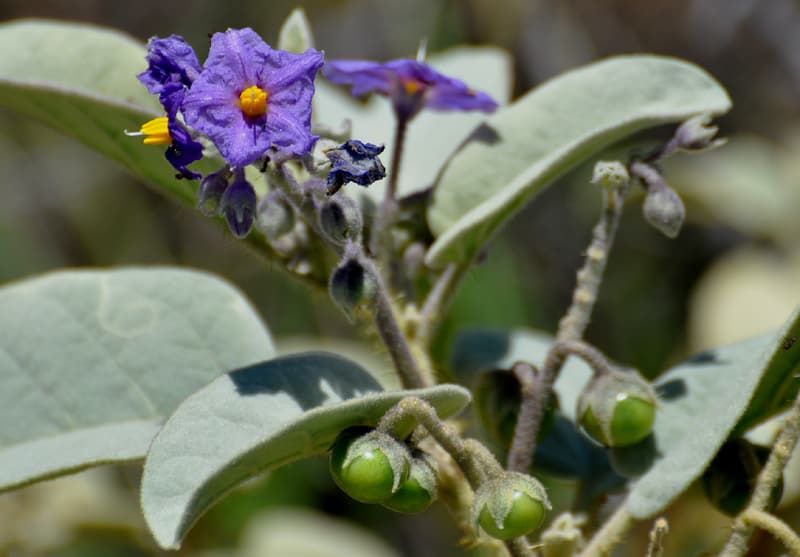
Estimated Number of Current Plants: fewer than 100
Location (Range): Gran Canaria, Canary Islands, Spain
Scientific Name: Solanum lidii
Conservation Status: Critically Endangered
The Pimentero de Temisas grows on the island of Gran Canaria in the Canary Islands of Spain. In Spanish, Pimentero de Temisas translates to “Temisas pepper pot” and this rare fruit is also called the “forest tomato.” Although the Pimentero de Temisas grows fruits, it is only used by locals as an ornamental plant because of its vivid purple flowers. It is estimated that there are only about 93 individual Pimentero de Temisas plants growing in the wild near the villages of Temisas, Barranco de la Cruz-Lomo del Chorrillo, Fortaleza Grande, Risco del Sao, and Risco Gallegos-Amurga. Fortunately, the Pimentero de Temisas is a protected species and is listed on the National Catalog of Endangered Species and in the Catalog of Protected Species of the Canary Islands. The Pimentero de Temisas is also being cultivated Viera & Clavijo Botanical Gardens.
Sardinian Currant
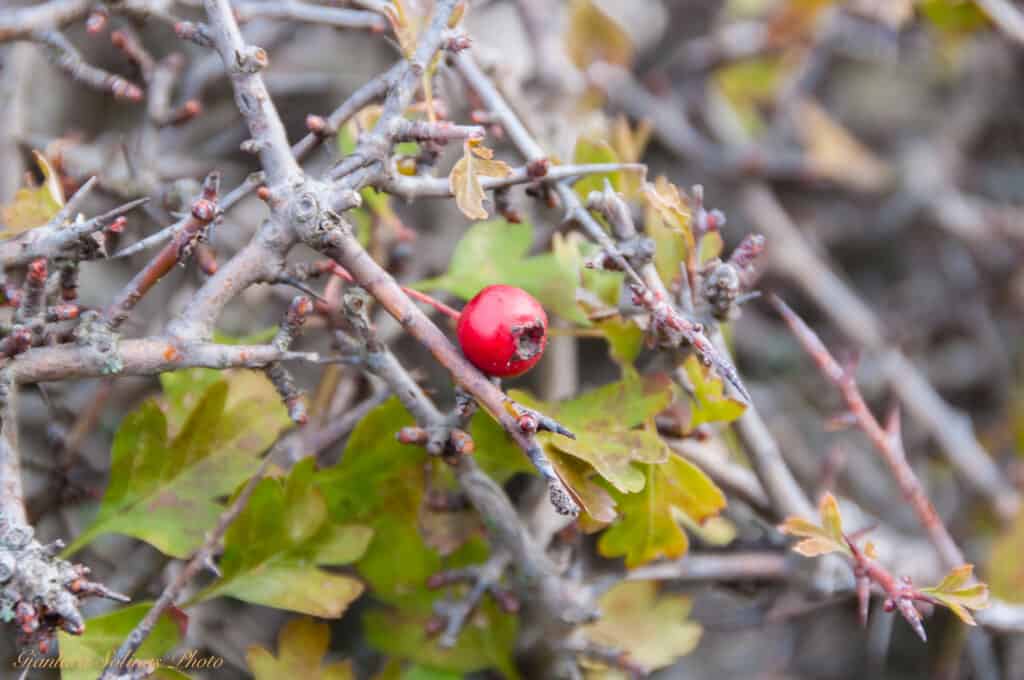
Estimated Number of Current Plants: about 80
Location (Range): Nuoro Province, Sardinia, Italy
Scientific Name: Ribes sardoum
Conservation Status: Critically Endangered
The Sardinian Currant only grows in one place in Nuoro Province on the island of Sardinia in Italy. Over the years, the estimated number of Sardinian Currant plants has fluctuated, but the most recent data from 2017 states that there are about 80 mature Sardinian Currant plants. In the past, the Sardinian Currant was more widespread in the boreal zone, but is now a relict species because it is only found in one location today. The biggest threat to the Sardinian Currant is unregulated grazing by wild animals like mouflons (wild sheep) and wild goats. In addition to outside threats, the Sardinian Currant has a low rate of fruit production, which limits the number of plants.
Gergeranian Pear
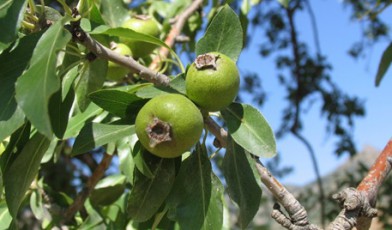
Estimated Number of Current Plants: fewer than 50
Location (Range): Daralegis floristic region of Armenia
Scientific Name: Pyrus gergerana
Conservation Status: Critically Endangered
The Gergeranian Pear is a rare fruit found near the village of Ger-Ger in Armenia. The current number of remaining Gergeranian Pear plants is believed to be fewer than 50 individuals. The Global Trees Campaign has been working to understand more about the Gergeranian Pear and has actually found very small populations of trees in new locations. The rare pear’s limited distribution is further impacted by habitat loss. The forest that the Gergeranian Pear grows has been cleared to use as pasture for communal livestock grazing and haymaking. During a recent field study by Global Trees Campaign, conservationists noticed that some of the Gergeranian Pear trees had been damaged by fires used to clear the land for agriculture.
Madagascar Banana
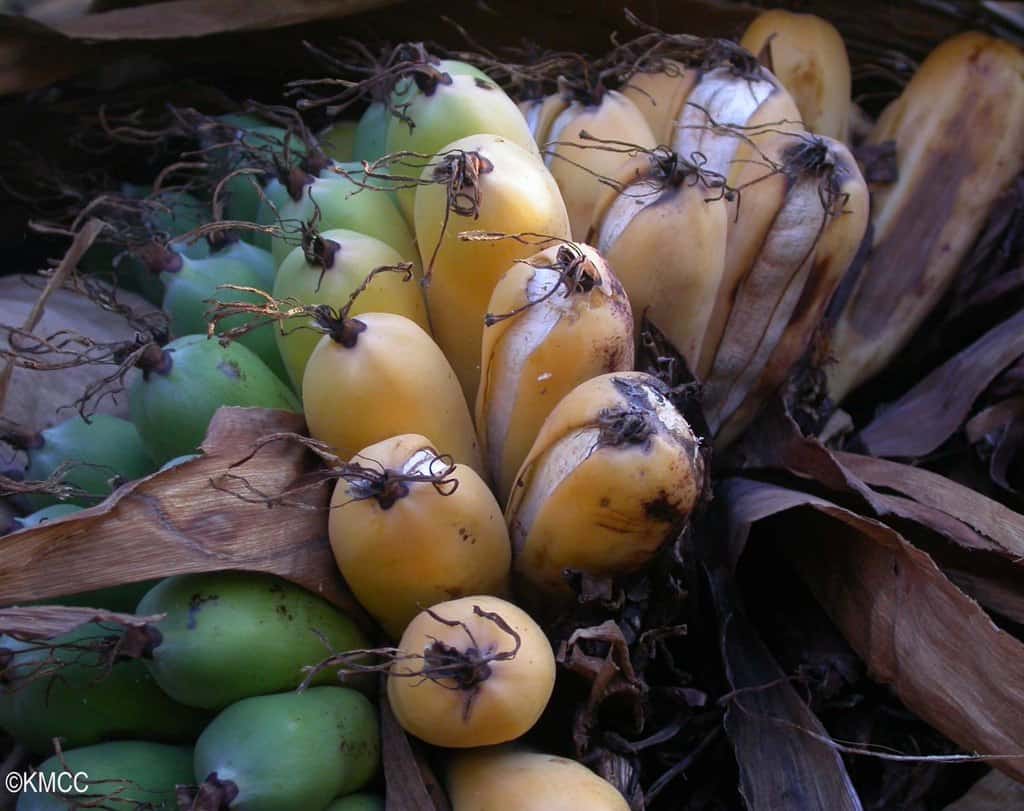
Estimated Number of Current Plants: about 3 – 5
Location (Range): Western Madagascar
Scientific Name: Ensete perrieri
Conservation Status: Critically Endangered
The Madagascar Banana or Ensete perrieri is a wild species of banana that is related to the Abyssinian Banana, which is Ethiopa’s most important food crop. It is also distantly related to the Cavendish banana, the banana sold in grocery stores in the U.S. and Europe. While many species of bananas are endangered, including the beloved Cavendish, the Madagascar Banana is critically endangered. There may be as few as three mature Madagascar Banana plants growing in Western Madagascar. Scientists have found Madagascar Banana seedlings growing near the mature plants and they hope that they might reach maturity some day. Although the Madagascar Banana isn’t cultivated because of its large seeds, it may be the key to saving our favorite edible banana species, which are susceptible to pests and disease.
Murray’s Plum
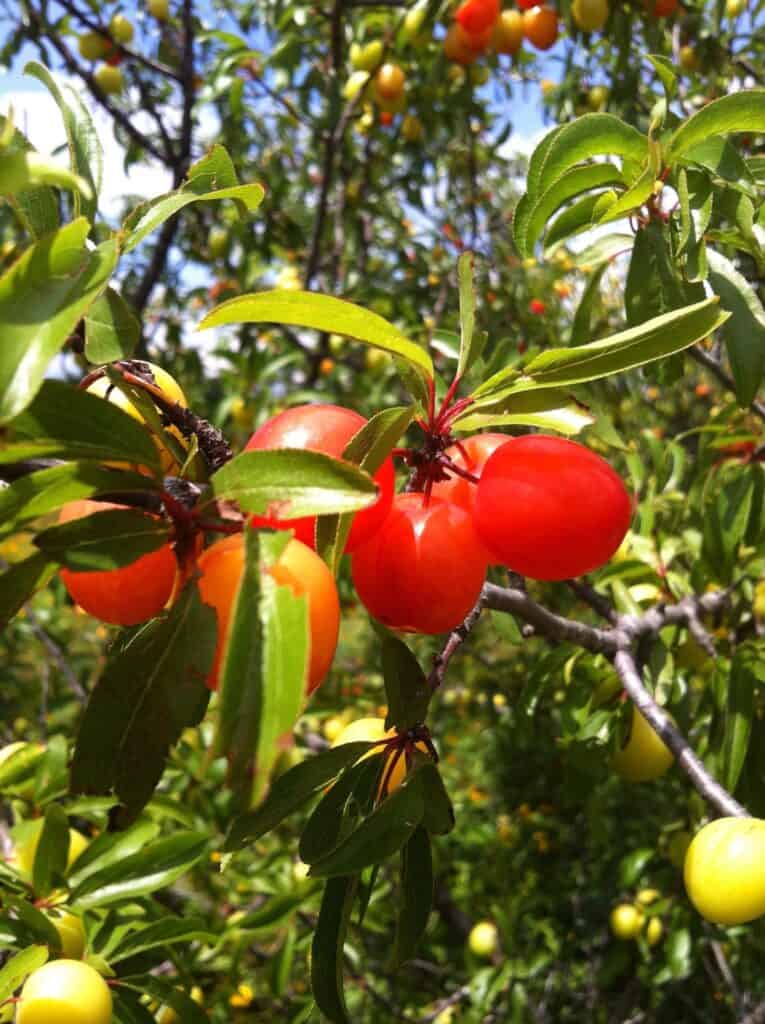
Estimated Number of Current Plants: Possibly extinct; most likely only a few individuals left
Location (Range): Edwards Plateau and Trans-Pecos region, Texas, USA
Scientific Name: Prunus murrayana
Conservation Status: Critically Endangered
Murray’s Plum is a wild plum species only found in Texas and it is so rare that no one has seen any of the surviving plants produce any fruit since it was first discovered in 1928. Additionally, recent surveys suggest that the Murray’s Plum could possibly be extinct because none of the known individual plants have reproduced. Due to these factors, Murray’s Plum is the rarest fruit in the world. Unfortunately, there are no Murray’s Plum plants being grown in botanical gardens or conservatories. According to the IUCN Red List, more field surveys are needed to determine how many Murray’s Plum plants are left and what threats those remaining plants may be facing.
This article originally appeared on Rarest.org.
More from Rarest.org
1941 Mercury Dime Value Guide
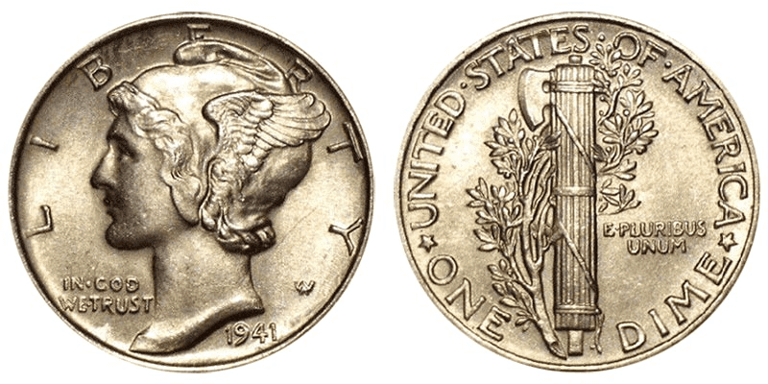
Whenever you decide to start a collection, it is essential to know that these silver coins were produced for nearly 30 years, from 1916 to 1945. So, although most older pieces in excellent condition are rare, the 1941 Mercury dime’s value is still quite low because of its large mintage. Read More
1997 Kennedy Half Dollar Value Guide

The 1997 half dollar is part of the Kennedy half dollar series first issued by the US Mint in 1964. In its first year of production, the coin was made of 90% silver and 10% copper. However, from 1965 to 1970, the silver content was reduced to 40%, and the copper content increased to 60%. Read More
1996 Kennedy Half Dollar Value Guide
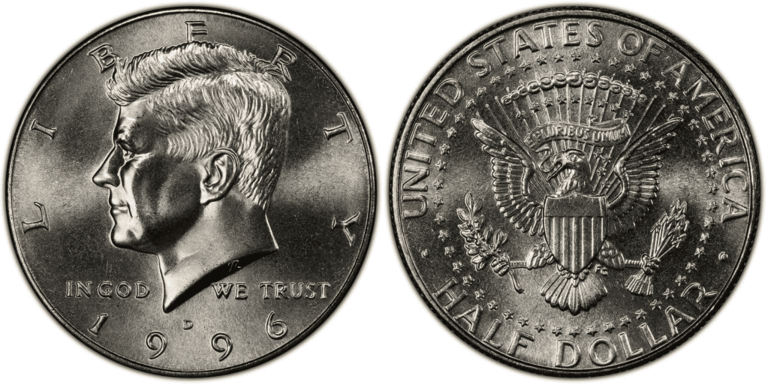
The 1996 Kennedy half dollar is composed of 75 percent copper and 25 percent nickel. Its value is 50 cents with a mass of 11.30 grams and a diameter of 30.61 millimeters. Read More
